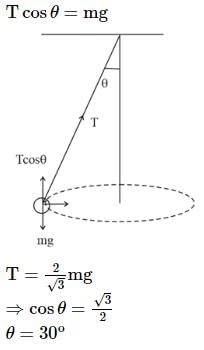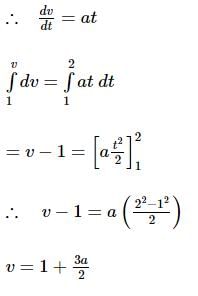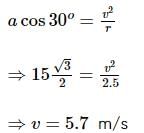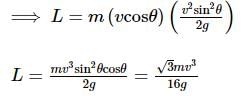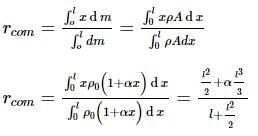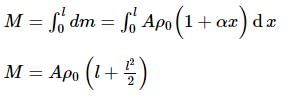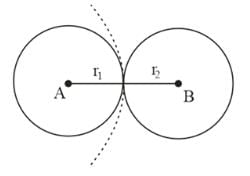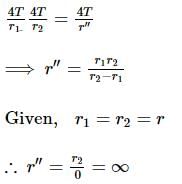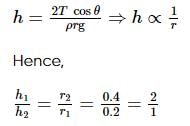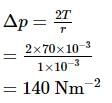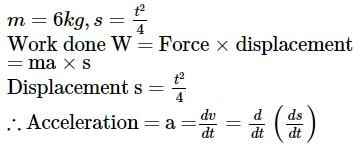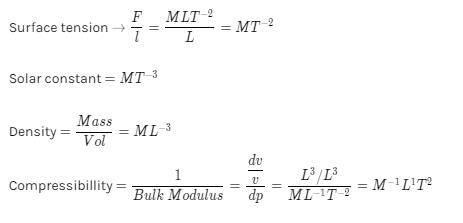SRMJEEE Physics Mock Test - 6 - JEE MCQ
30 Questions MCQ Test - SRMJEEE Physics Mock Test - 6
A transformer has turn ratio 100/1. If secondary coil has 4 amp current then current in primary coil is
If potential V=100  0.5 Volt and current I = 10
0.5 Volt and current I = 10  0.2 amp are given to us. Then what will be the value of resistance
0.2 amp are given to us. Then what will be the value of resistance
 0.5 Volt and current I = 10
0.5 Volt and current I = 10  0.2 amp are given to us. Then what will be the value of resistance
0.2 amp are given to us. Then what will be the value of resistanceIf an ammeter is connected in parallel to a circuit, it is likely to be damaged due to excess
If an electron and a photon propagate in the form of waves having the same wavelength, it implies that they have the same
When the no. of turns in a coil is triplled, without any change in the length of coil, its self-inductance becomes
A fully charged capacitor has a capacitance (C). It is discharged through a small coil of resistance wire embedded in thermally insulated block of specific heat capacity (s) and mass (m). If temperature of the block is raised by ΔT, the potential difference (V) across the capacitor is
When we touch the terminals of a high voltage capacitor, even after a high voltage has been cut off, then the capacitor has a tendency to
A fireman of mass 60 kg slides down a pole. He is pressing the pole with a force of 600 N. The coefficient of friction between the hands and the pole is 0.5, with what acceleration will the fireman slide down (g=10m/s2)
If the temperature of a black body be increased from 27oC to 327oC the radiation emitted increases by a fraction of
The semivertex angle of the conical pendulum through which a body can perform uniform circular motion, if the string support 2/√3 times its weight, is
A particle moves in a straight line with variable acceleration = at ,SI units (a is +ve constant and t is time). Find the speed of the particle at t = 2s, if the velocity is +1 m/s at t = 1s
Assertion: In case of projectile motion, the magnitude of rate of change of velocity is variable.
Reason: In projectile motion, magnitude of velocity first decreases and then increases during the motion.
In the given figure, a = 15 m s−2 represents the total acceleration of a particle moving in the clockwise direction in a circle of radius R = 2.5 m at a given instant of time. The speed of the particle is
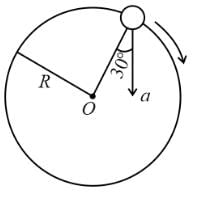
A particle of mass m is projected with a velocity v making an angle of 30° with the horizontal. The magnitude of angular momentum of the projectile about the point of projection when the particle is at its maximum height h is
Assertion: Magnitude of instantaneous velocity is equal to instantaneous speed.
Reason: Distance is nearly equal to displacement if displacement is very small.
A closed cylinder of length ' l ' containing a liquid of variable density ρ(x) = ρ0(1 + αx) is rotating about a vertical axis with an angular speed ω. Find the net force exerted by the liquid on the axis of rotation. (Take the cylinder to be massless and A = cross sectional area of cylinder, ignore the gravity) -
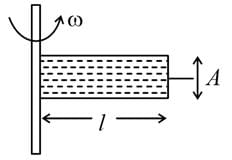
A uniformly tang vessel is filled with a liquid of density 900 kg m−3. The force that acts on the base of the vessel due to the liquid is (g = 10 m s−2)
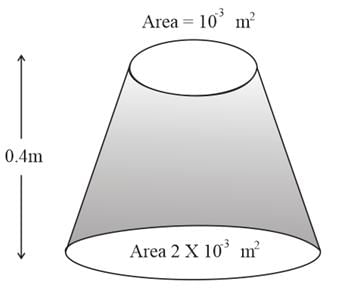
If two soap bubbles of different radii are connected by a tube
Two capillary tubes of radii 0.2 cm and 0.4 cm are dipped in the same liquid. The ratio of heights through which liquid will rise in the tubes is
To what height should a cylindrical vessel be filled with a homogeneous liquid to make the force with which the liquid presses on the sides of the vessel equal to the force exerted by the liquid on the bottom of the vessel. If should be
A spherical drop of water has radius 1 mm if surface tension of water is 70 × 10−3 Nm−1, difference of pressure between inside and outside of the spherical drop is
A mercury drop of radius 1 cm is broken into 106 droplets of equal size. The work done is (S = 35 × 10−2 Nm−1)
When the waves y₁ = a sin ωt and y₂ = a cos ωt are superimposed, then resultant amplitude is
A body of mass 6 kg is under a force which causes displacement in it given by S = t2/4 metres where t is time. The work done by the force in 2 seconds is
The physical quantity which has the dimensional formula M1T⁻3 is
A long spring when stretched by x cm has a potential energy V. On increasing the stretching to nx cm, the potential energy stored in the spring is
Two identical light waves, propagating in the same direction, have a phase difference δ . After they superpose the intensity of the resulting wave will be proportional to




